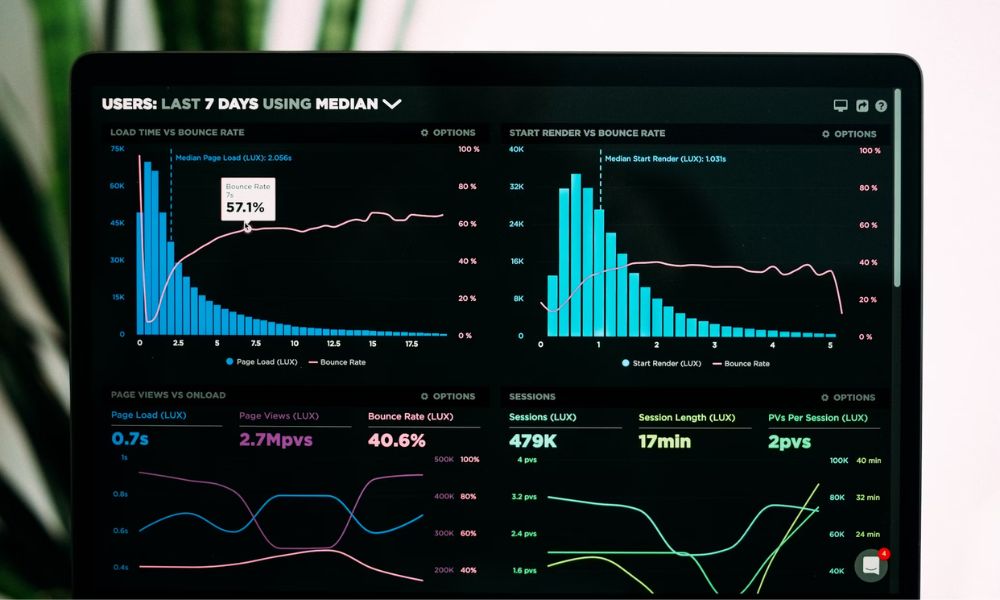In today’s data-rich environment, the ability to transform intricate datasets into clear, compelling narratives is a critical skill for data professionals. Multi-layered visuali-zations stand out as powerful tools for unraveling complex data stories, enabling analysts to present multiple dimensions of information in a cohesive and interactive manner. By layering different data elements, these visualizations offer a deeper understanding of relationships, trends, and outliers that single-layer charts might miss. For those aspiring to master this sophisticated aspect of data visualiza-tion, enrolling in a data analyst course can provide the necessary expertise and hands-on experience.
Understanding Multi-Layered Visualizations
Multi-layered visualizations integrate multiple data sets or differ-ent aspects of a single data set into one comprehensive graphic. Unlike traditional single-layer charts, which might display only one variable or relationship at a time, multi-layered visuals allow viewers to see how different factors interact and influence each other simultaneously. This approach not merely enhances the depth of analysis but also facilitates more informed decision-making by presenting a ho-listic view of the data.
Data analysts who participate in a data analyst course in Pune learn the foundational principles of creating layered visu-alizations. They explore how to effectively combine various chart types, including bar charts, line graphs, and scatter plots, to build a multidimensional narrative that highlights key insights and correla-tions.
The Importance of Layering Data
Layering data in visualizations serves several crucial func-tions:
- Enhanced Clarity: By displaying multiple data points and relationships together, analysts can provide a clearer picture of complex scenarios.
- Contextual Understanding: Layers can offer context by showing how different variables influence each other, mak-ing it easier to identify causation and correlation.
- Interactive Exploration: Multi-layered visuals often support interactive elements, allowing users to delve way deeper into specific aspects of the data as needed.
For example, a multi-layered sales dashboard might include sales trends over time, regional performance indicators, and product category breakdowns all in one view. This comprehensive approach enables stakeholders to quickly grasp the overall performance while also identifying specific areas that require attention.

Designing Effective Multi-Layered Visualizations
Creating effective multi-layered visualizations involves careful planning and design considerations:
- Choose the Right Tools: Utilize advanced data visualization tools like Tableau, Power BI, or D3.js that support layering and interactivity.
- Maintain Visual Hierarchy: Ensure that the most critical information stands out by using size, color, and placement strategically. Secondary layers should complement rather than overshadow the primary da-ta.
- Ensure Clarity and Readability: Avoid clutter by limiting the number of layers and using clear labels and legends. Each layer should add value without overwhelming the viewer.
- Use Consistent Scales: When combining different data sets, maintain consistent scales and units to prevent misinter-pretation and ensure accurate comparisons.
Participants in a data analyst course learn these design principles through practical assignments and projects, enabling them to create multi-layered visualizations that are both informative and aesthetically pleas-ing.
Leveraging Interactivity in Layered Visualizations
Interactivity is a key component of effective multi-layered visuali-zations. Interactive elements such as filters, tooltips, and drill-downs allow users to explore data on their own terms, enhancing engagement and understanding. For instance:
- Filters: Enable users to focus on specific data subsets by applying filters based on time periods, regions, or other crite-ria.
- Tooltips: Provide additional details when users hover over data points, offering deeper insights without cluttering the main visualization.
- Drill-Downs: Al-low users to navigate from high-level overviews to detailed views, facilitating a more granular analysis of the data.
In a data analyst course in Pune, students gain hands-on experience in incorporating these interactive features into their visualizations. They learn how to design user-friendly interfaces that make complex data accessible and engaging for diverse audiences.
Real-World Applications of Multi-Layered Visualizations
Multi-layered visualizations are invaluable across various indus-tries and functions. Here are some real-world applications:
- Business Intelligence: Companies use layered dashboards to monitor key performance indicators (KPIs), track sales performance, and analyze market trends.
- Healthcare: Med-ical researchers visualize patient data alongside treatment outcomes as well as demographic infor-mation to identify patterns and improve care strategies.
- Finance: Financial analysts create comprehensive views of market data, portfolio performance, and economic indicators to inform investment decisions.
- Marketing: Mar-keters analyze campaign performance by layering data on customer demographics, engagement met-rics, and sales conversions.
- Public Policy: Government agencies visualize social, economic, and environmental data to develop informed policies and track their impact.
A data analyst course equips today’s professionals with the skills to apply multi-layered visualization techniques effec-tively in these diverse contexts, enhancing their ability to communicate complex data stories clearly and persuasively.
Overcoming Challenges in Multi-Layered Visualization
While multi-layered visualizations offer significant benefits, they also present unique challenges:
- Complexity Management: Balancing the inclusion of multiple data layers without creating visual clutter requires careful design and a clear understanding of the data.
- Performance Issues: Large and complex visualizations can be resource-intensive, potentially slowing down perfor-mance. Optimizing data queries and using efficient visualization techniques can mitigate these is-sues.
- Data Integration: Combining data from several disparate sources and ensuring consistency in format and scale can be difficult. Effective data preprocessing and cleaning are essential to create seamless multi-layered visu-als.
Through a data analyst course in Pune, students learn strategies to address these challenges, including best prac-tices for data integration, performance optimization, and maintaining visual clarity.
Future Trends in Multi-Layered Data Visualization
As technology continues to advance, the field of data visualization is evolving rapidly. Future trends in multi-layered visualizations include:
- Artificial Intelligence Integration: AI can automate the creation of multi-layered visuals, suggesting optimal layering and highlighting key insights based on data patterns.
- Augmented Reality (AR) & Virtual Reality (VR): These advanced technologies offer immersive data visuali-zation experiences, allowing users to interact with multi-layered data in three-dimensional spac-es.
- Real-Time Data Streaming: Enhanced capabilities for handling real-time data will enable dynamic, up-to-the-minute multi-layered visualizations that reflect ongoing changes instantly.
- Enhanced Collaboration Tools: Integrated collaboration features will allow multiple users to interact with and modify multi-layered visuals simultaneously, fostering teamwork and collective analysis.
Professionals who stay abreast of these trends through continu-ous learning, such as enrolling in a data analyst course, will be well-positioned to leverage the cutting-edge advancements and maintain a competitive edge in the field.
Building a Strong Foundation through Education
Creating effective multi-layered visualizations requires a blend of technical skills and creative insight. A comprehensive data analyst course covers essential topics such as:
- Data Cleaning and Preparation: Ensuring data is accurate, consistent, and ready for analysis.
- Advanced Visualization Techniques: Mastering tools and techniques for creating layered and interactive visu-als.
- Storytelling with Data: Developing narratives that effectively communicate insights and drive action.
- Analytical Thinking: Cultivating the ability to interpret complex data and derive meaningful conclu-sions.
By enrolling in a data analyst course in Pune, aspiring professionals gain practical experience and theoretical knowledge that empowers them to design multi-layered visualizations that stand out and deliver impactful data sto-ries.
Conclusion
Multi-layered visualizations represent a significant advancement in the way we interpret and communicate complex data. By integrating multiple data sets and dimensions into cohesive, interactive graphics, these visualizations provide deeper insights and foster more in-formed decision-making. As organizations across various industries recognize the value of these tools, the demand for skilled data analysts who can create effective multi-layered visuals continues to grow.
Investing in a data analyst course equips professionals with the necessary skills to navigate this sophisticated aspect of data visualization. From understanding the principles of design and interactivity to mastering the tech-nical tools required for layering data, education plays a pivotal role in preparing analysts to meet the challenges and opportunities presented by multi-layered visualizations.
In an increasingly data-driven world, the ability to blend art and analytics through multi-layered visualizations not only enhances the clarity and impact of data stories but also positions data professionals as invaluable assets in their organizations. Embracing these ad-vanced visualization techniques ensures that complex information is not only accessible but also en-gaging, ultimately driving smarter, data-informed decisions.
Business Name: ExcelR – Data Science, Data Analytics Course Training in Pune
Address: 101 A ,1st Floor, Siddh Icon, Baner Rd, opposite Lane To Royal Enfield Showroom, beside Asian Box Restaurant, Baner, Pune, Maharashtra 411045
Phone Number: 098809 13504
Email Id: [email protected]

